Saving ghost cities
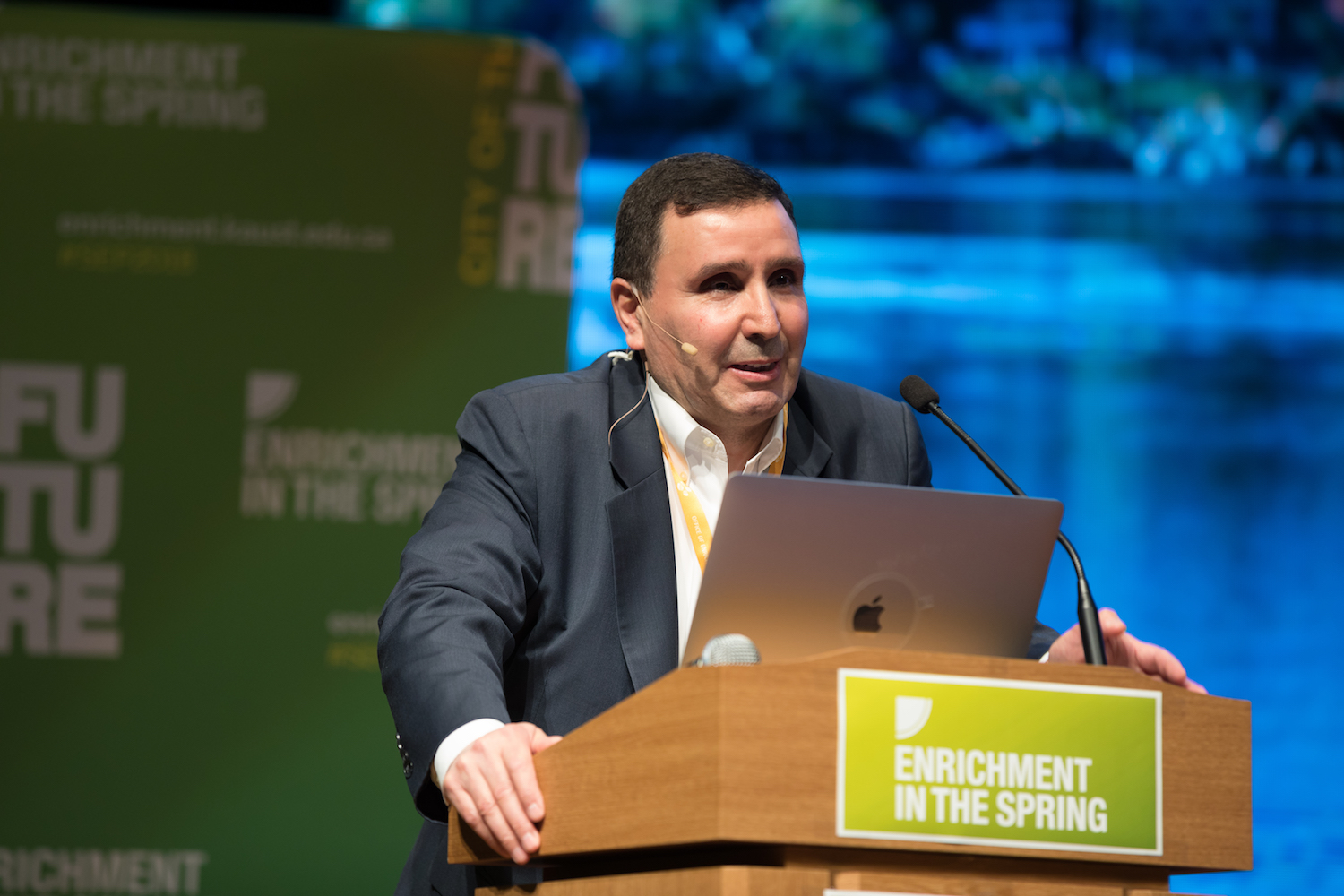
MIT Professor Kamal Youcef-Toumi spoke about creating successful, modern cities during his 2018 KAUST Enrichment in the Spring lecture on April 30. Photo by Lilit Hovhannisyan.
- By Caitlin Clark, KAUST News
In the early 2000s, China began construction of Ordos Kangbashi, a new, futuristic city located in Inner Mongolia.
Ordos was supposed to be exceptional—a city created for mining and government workers and other workers from Dongsheng, a much older, bustling industrial city located to the north. The city's inception came after a coal mining boom in the region, with the Chinese government expecting Ordos to have a million residents by 2023.
However, Ordos soon ran into problems. Coal mining—an essential part of the area's economy—went bust, and the government scaled down Ordos' capacity to 300,000 people. Despite the economic woes, construction of the city continued, with workers completing Ordos' main central areas—a beautiful opera house, a grand central square to rival Tiananmen Square in Beijing, a huge library and large government buildings—and housing for incoming residents.
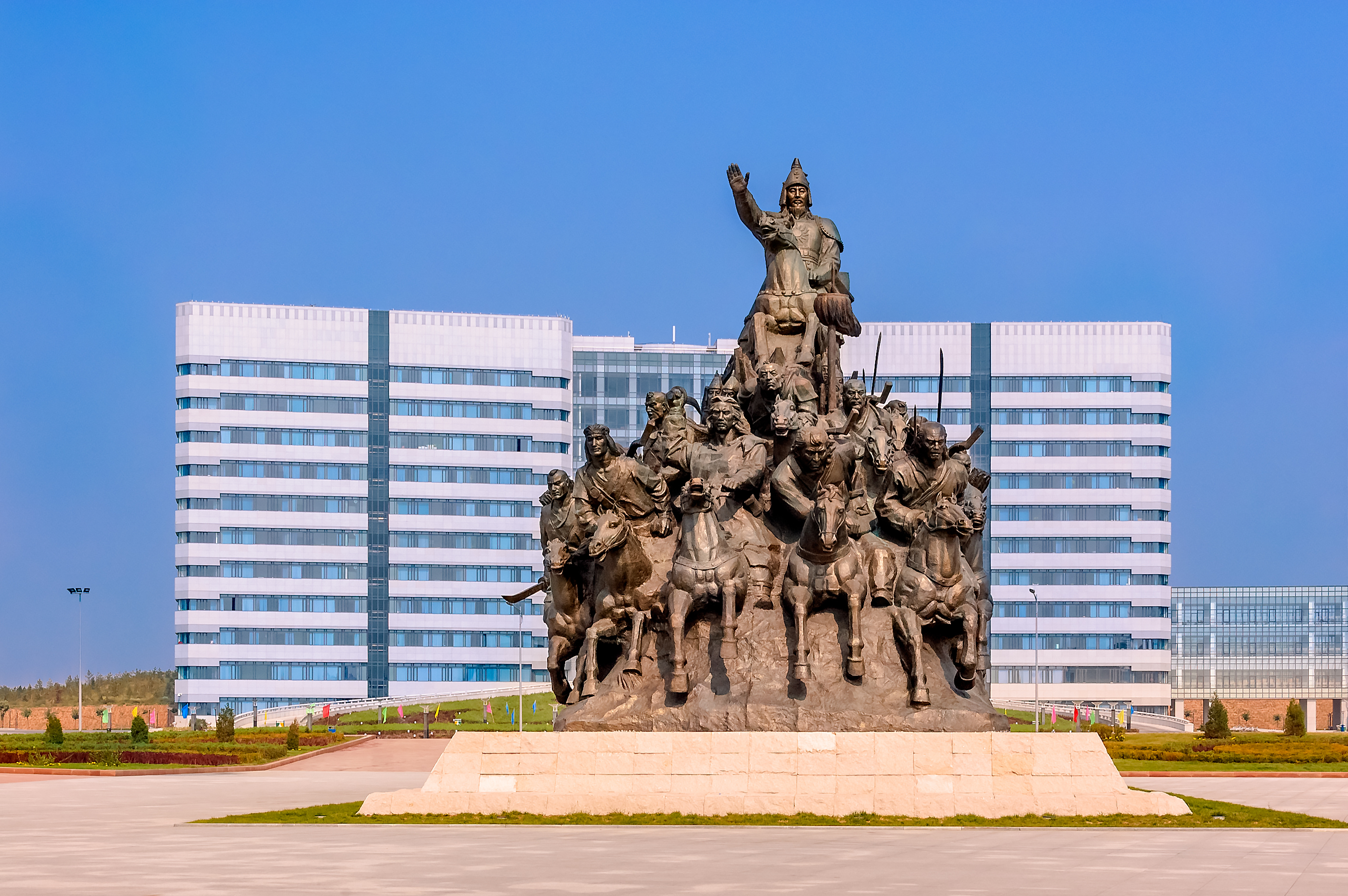
An empty square in Ordos Kangbashi, Inner Mongolia, China, features a statue paying homage to the history and culture of the region. To many outsiders, the recently constructed city appears lacking in residents. Photo courtesy of Shutterstock.
A 'failed' city—or not?
Ordos began attracting media attention in 2009 due to its vast swathes of unoccupied apartment buildings and empty 40-meter-wide streets. Labeled as a "failure" and a "ghost town," international media outlets called Ordos a total disaster in modern city building.
But was it? By 2016, Ordos had over 100,000 residents and almost 90 percent of its apartments had been sold, although many were not yet occupied. With the government providing incentive packages—including free housing, excellent children's education and generous salaries—government workers began moving into the city, and it saw a steady influx of residents coming from Dongsheng. Why, then, did most of Ordos appear to be deserted?
"People are only one aspect of this story," noted Kamal Youcef-Toumi, a professor of mechanical engineering at MIT, during his 2018 Enrichment in the Spring lecture on April 30 on campus. "The environment—or public realm—and economic impact also play important roles. Great cities have a great public realm and a great balance between social and economic development."
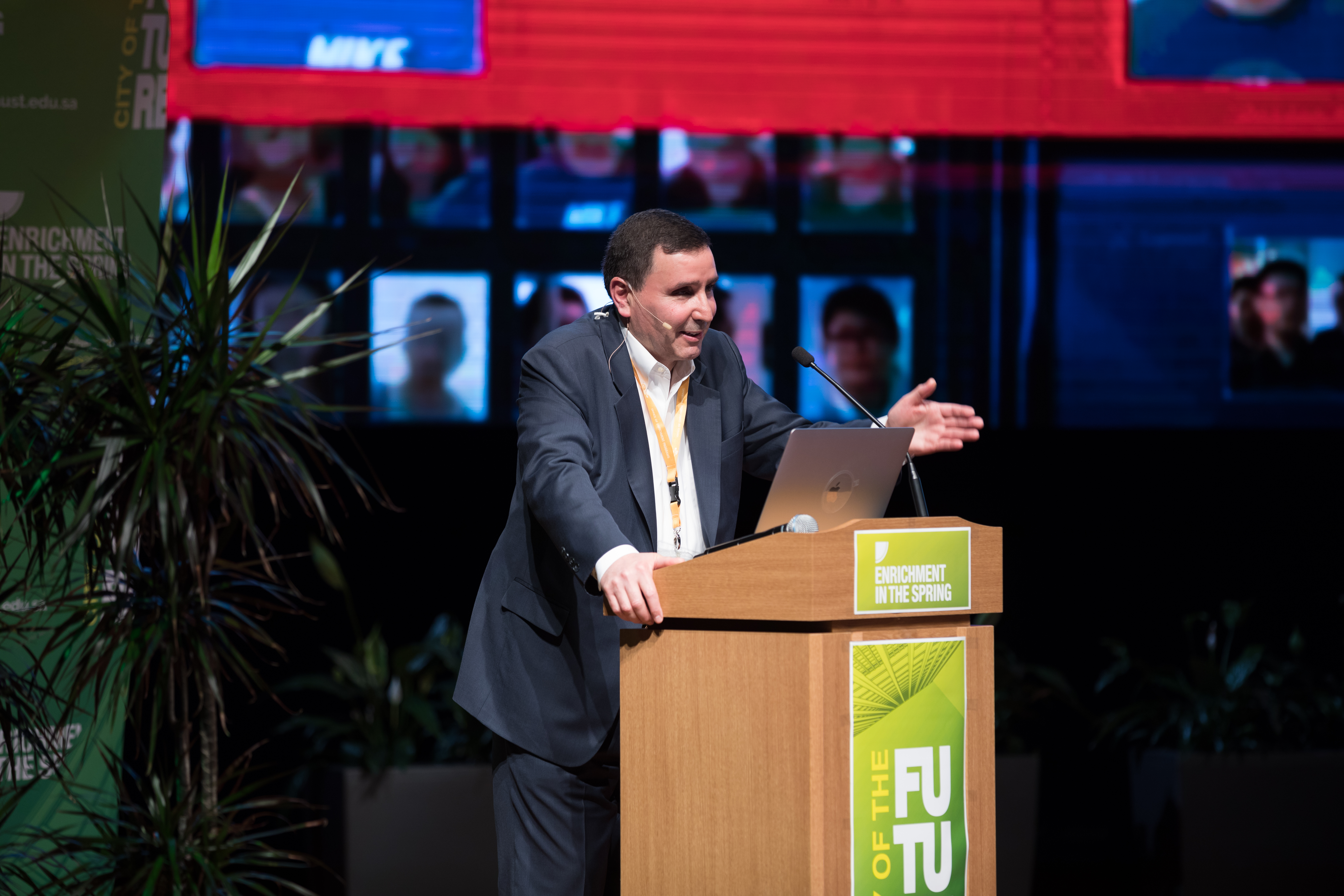
Kamal Youcef-Toumi, a professor of mechanical engineering at MIT and the co-director of the Center for Complex Engineering Systems at King Abdulaziz City for Science and Technology and MIT, outlined why cities like Ordos, China, have failed to thrive as part of his 2018 KAUST Enrichment in the Spring lecture. Photo by Lilit Hovhannisyan.
According to Youcef-Toumi, the public realm is defined as "the space around, between and within buildings that are publicly accessible, including streets, parks and open spaces—the spaces that people use, that foster interaction and let them enjoy life." Both the public realm and economic impact are "two critical concepts found in successful cities and nations," he stated.
In Ordos, despite the city's grandiose architecture, sleek, modern buildings and huge open spaces, there was a lack of logical design. Due to the city's massive streets and enormous layout, residents have to travel long distances by car to get to shopping, entertainment and workplaces, and they rarely see each other. When looking for entertainment, most drive to Dongsheng.
"Cities must be built to foster the interaction between people, and the environment is very important for this. However, the environment itself is not sufficient," noted Youcef-Toumi. "Cities like Ordos must also have diversified business opportunities to be successful in the future."
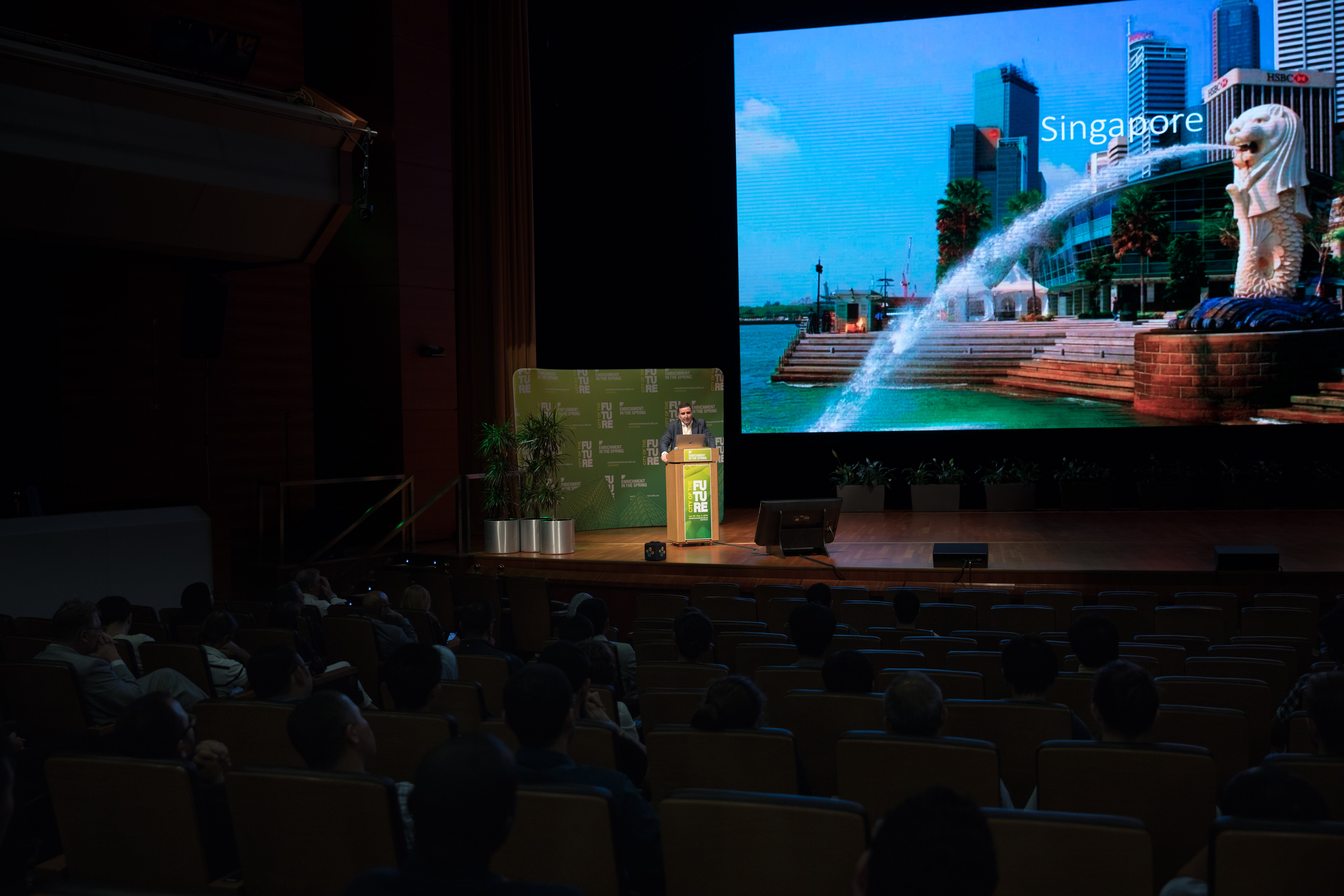
KAUST 2018 Enrichment in the Spring speaker Kamal Youcef-Toumi explained that Singapore is a "great city" with an excellent balance of the public realm and economic impact during his keynote lecture. Photo by Lilit Hovhannisyan.
Ordos illustrates an urban environment that hasn't prospered because city planners "failed to focus on the public realm and creating opportunities for economic impact," Youcef-Toumi explained.
Although the Chinese government has stepped in to diversify Ordos' economy from the coal boom of earlier years, creating opportunities for startups, electric car production plants and tourism, the city's main issues still exist.
Building—and modeling—a great city
Youcef-Toumi also works as the co-director of the Center for Complex Engineering Systems at King Abdulaziz City for Science and Technology (KACST) and MIT, located in Riyadh. At KACST, he and his international team of colleagues focus on developing methods for modeling, designing, managing and simulating complex systems, such as air, road and rail transportation, the electrical grid and water distribution networks—all of which are important in the design and management of modern cities.
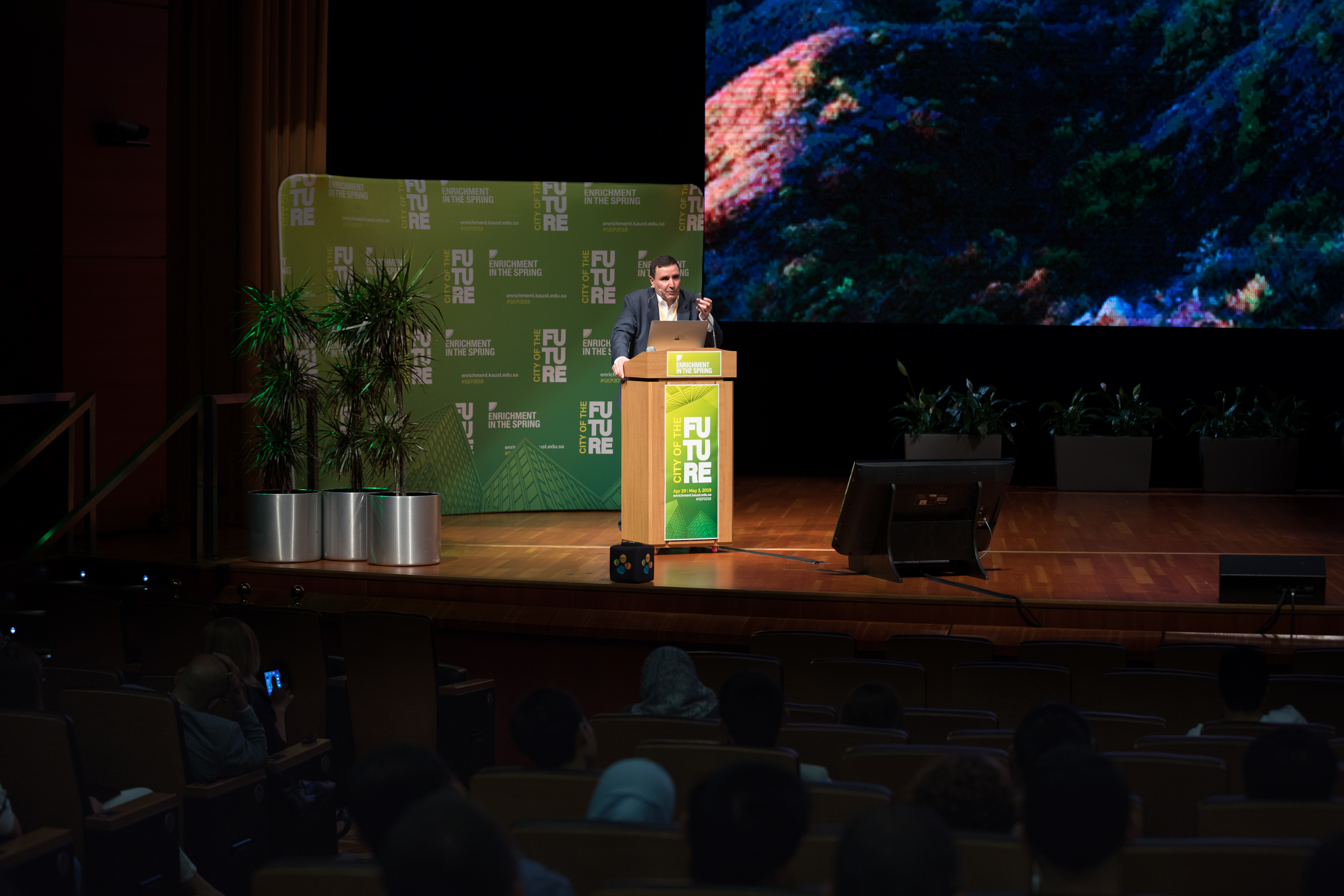
Kamal Youcef-Toumi, a 2018 Enrichment in the Spring speaker and professor at MIT, also works as the co-director of the Riyadh-based Center for Complex Engineering Systems at King Abdulaziz City for Science and Technology and MIT. Photo by Lilit Hovhannisyan.
"We develop advanced human-computer interactions at KACST so that these models can be used for many different aspects, such as monitoring, planning or prediction in dealing with complex and large systems," he noted.
Perhaps if Ordos' city planners had consulted Youcef-Toumi's team in the city's early stages, they would not have been left with Ordos' international reputation as a "ghost city."
"Change and adaptation are equally important for people and for cities," Youcef-Toumi said. "We have to adapt ourselves—and our cities—as times and strategies change. We must adapt, learn new skills and continue, or we become irrelevant very quickly. Change and new knowledge are important to make great cities what they are today."
Related stories:
-
Visualizing the future
- Seeing the light: Laser-based visible light communications
- Developing disposable lifesaving sensors
- KAUST student awarded grant from KACST
- KACST drones participate in research projects at KAUST
-
Understanding networked systems

